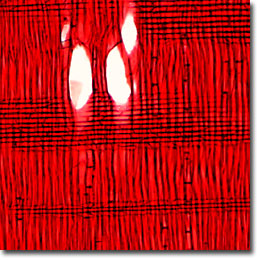The American Chestnut Tree
The American Chestnut (Castanea dentata) is a hardwood tree found primarily in dry woods throughout the eastern United States and Canada. These trees grow to heights of around 100 feet and produce beautiful flowers. The sapwood is whitish to light brown, while the heartwood is a grayish brown color turning darker with age.

Cross Section

Radial Section

Tangential Section
Chestnut trees are distinctive among North American woods and are occasionally confused with oak, but can be differentiated because the chestnut is lighter and softer and lacks the broad rays that are a prominent feature of oak timber.
In the early twentieth century a fungal disease attacked and killed most chestnut trees. This disease probably originated in eastern Asia and was accidentally introduced into the United States. New species of American chestnut have been developed that are resistant to the fungus and this tree is now making a comeback. The tree is widely used as a shade tree in gardens and parks, and is sometimes still used to line streets. American chestnut wood is used widely for furniture, caskets and coffins, boxes, crates, millwork, and plywood.
Microscopic examination of iron-alum hematoxylin and safranin stained thin sections (see the digital images presented above) reveals a ringed porous wood having simple perforation plates. In the late wood, vessels are numerous and occasionally scalariform with inter-vessel pits being 8 to 18 micrometers in diameter and orbicular to long-elliptical in shape. Vasicentric tracheids are present, but confined to the vicinity of the early wood vessels. Metatracheal parenchyma is abundant, especially in late wood, and fibers range from libriform to fiber tracheids and are very coarse in texture. The rays are unstoried, homocellular, and uniseriate.